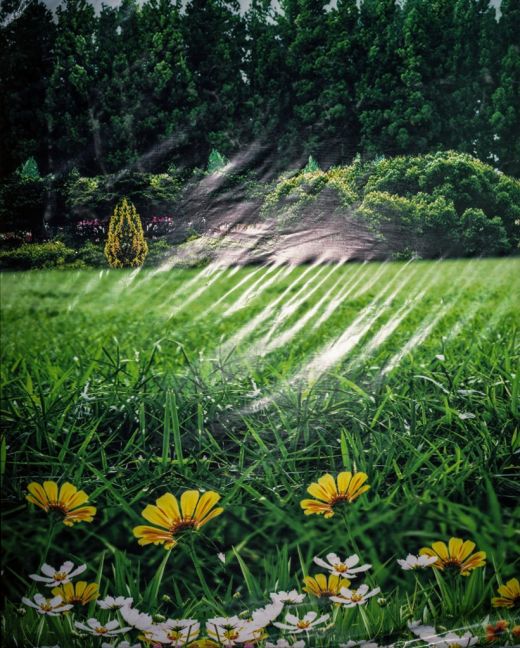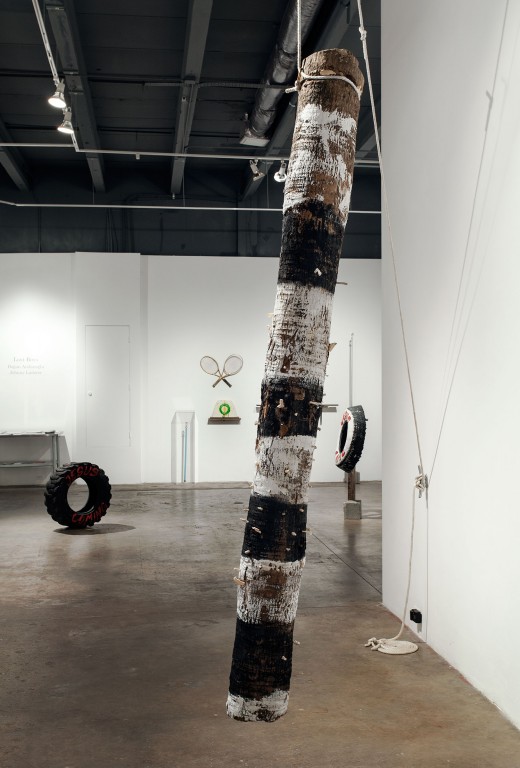The Lost Boys: Doğan Arslanoğlu and Johnny Laderer
Monica Uszerowicz

Doğan Arslanoğlu, Untitled 13 (Fade In China), 2012.
David Castillo Gallery, Miami
By Monica Uszerowicz
The Lost Boys of J.M. Barrie’s Peter Pan are something of a misnomer. As the story goes, they were misplaced by their mothers and, having gone unclaimed for several days, were taken to Neverland. The Lost Boys barely had time to feel lost before being thrust into an environment that would inevitably shape their personal narratives. The sentiment is the same in Doğan Arslanoğlu’s and Johnny Laderer’s show at the David Castillo Gallery. Here, the story’s protagonists are not lost; instead, they are carving out a home, a narrative composed of intimate experience, nostalgia, the effect of place on a boy’s self-actualization.
Arslanoğlu’s snapshot photography— most of which was shot in 35mm film —captures an autobiographical space: a sun-streaked snapshot of a freckled girlfriend, scenes from Shanghai, splashes of water rich and dynamic as a human portrait “Untitled 14 (Getting To You)”. Like contemporaries Patrick O’Dell and Jack Siegel or Nan Goldin before him, one gets the sense that his camera is an extension of his arm, the banal and beautiful given equal precedence. One of the show’s largest images, “Untitled 13 (Fade In China)”, is a photograph of a photograph. Daisies are positioned in the foreground, a field of grass and hedges dwarfing them from afar. A structural reading of this would invert the normal symbolic focus of the flowers, but it is perhaps more interesting how Arslanoğlu is not only aware of the image’s generic, canned sensibility, but somehow brings a unique eye to it.
Laderer’s work consists of sculptures constructed with objects found in nature, on road trips, and pulled from his garage, then personalized with subversive humor. For “Licensed and Bonded 1,” concrete oranges, scavenged from an abandoned roadside souvenir shop, are propped up in a box, ready to be scooped away and consumed. One might imagine that underneath their facade, these oranges were real, fleshy fruits, eventually covered in the same hardened material that seems to spread, disease-like, over Florida’s landscape. Much of Laderer’s work explores his own life—the “Personal Best” series includes trophies from his boyhood; a chunk of his surfboard, shaped like a ship’s sinking bow, comprises another piece. It’s deeply individual, true, but consistently employs Florida’s familiar imagery and story. The sable palm of “Atomic Test,” dangling from the ceiling by rope, is dotted with shells affixed by Laderer. It feels powerful, like the ocean and hurricane-resistant palm trees themselves, but cumbersome and precarious, too, as if the whole structure might drop. These pieces are reminders: it is as easy to live off the land as it is to destroy it. Miami has been accused of demolishing its own cultural and environmental history; Laderer could never be.

Johnny Laderer, Atomic Test, 2013.










